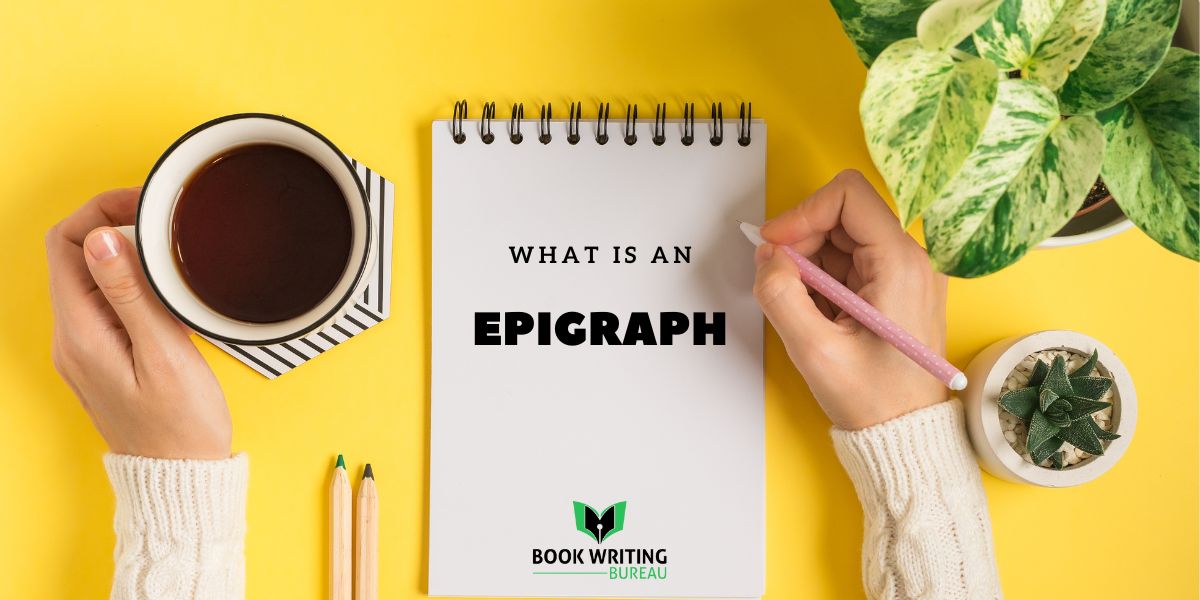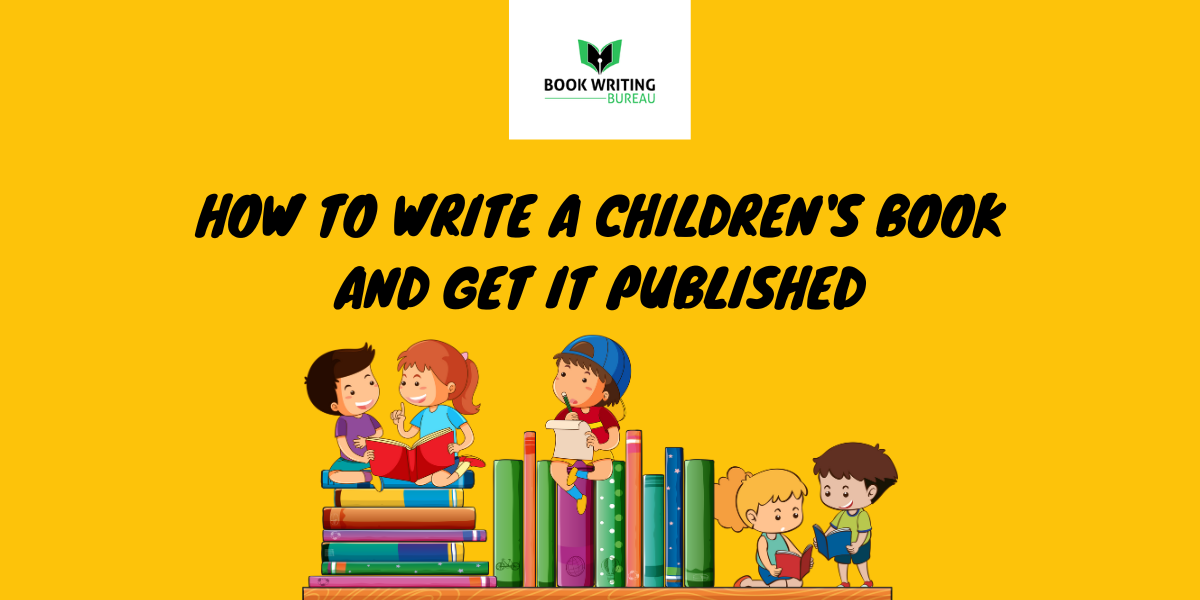
Writing
Imagine starting your writing journey with a captivating quote that captures the essence of your work and engages your readers from the beginning. This is precisely what an epigraph, often employed by professional ebook writing services, does. It is a literary device that has been used for centuries to enhance the impact of texts, from classic novels to modern articles. In this guide, you learn what an epigraph is, understand what they are, their significance, and how you can effectively use them to elevate your writing.
What Is an Epigraph?
An epigraph is a brief, thought-provoking quotation or statement that precedes the main text of a work. It can be a sentence, a phrase, or even a few lines of poetry. Epigraphs are typically set apart from the main text, often centered on the page and in italics or quotation marks. They are meant to catch the reader’s attention and provide a glimpse into the work’s themes, tone, or subject matter.
What is an epigraph in a book?
An epigraph in a book is a brief quotation or excerpt that appears at the beginning of a chapter or section or sometimes at the beginning of the book itself. Authors have used epigraphs to provide context, set the tone, or convey a theme or message related to the following content. They can be taken from various sources, including literature, poetry, historical texts, speeches, or song lyrics.
The purpose of an epigraph can vary. It may offer insight into the themes or motifs explored in the book, create a mood or atmosphere, or provide a frame of reference for the reader. Epigraphs can be a way for authors to pay homage to other writers or thinkers whose work has influenced their own, or they may serve as a teaser or a thought-provoking introduction to the chapter or book.
In some cases, epigraphs are directly related to the plot or subject matter of the book, while in others, such as when writing a book about your life, they can be more symbolic or abstract. Ultimately, epigraphs are a creative tool that authors use to enhance the reader’s experience and add depth to their work.
How to format an epigraph?
Formatting an epigraph can vary depending on the style guide you are following (e.g., MLA, APA, Chicago, or a specific publication’s guidelines). However, here is a general guide on how to format an epigraph:
Position:
An epigraph is typically placed at the beginning of a book, chapter, or section. You can also write an epigraph on a dedication page.
Attribution:
Below the epigraph, you should include the author’s name and the source of the quotation. Depending on your preference and style guide, this can be centered, right-aligned, or left-aligned.
Formatting of the Text:
Quotation Marks:
Use quotation marks around the text of the epigraph if it is a direct quotation.
Font:
The epigraph is often presented in a different font or formatting style (e.g., italics) to distinguish it from the main text. The choice of font style may vary depending on the overall design of your document.
Spacing and Indentation:
Epigraphs are typically indented from both the left and right margins. The exact indentation may vary depending on the style guide. Extra spacing may be above and below the epigraph to differentiate it from the main text. The amount of spacing can vary based on design choices.
Punctuation:
Use proper punctuation within the epigraph, following the punctuation rules for quotations.
Key Question: What type of writing is most similar to an autobiography
How to write an epigraph?
Here are steps to help you write an effective epigraph:
Choose a Relevant Theme:
Consider the overarching theme or message of your work. Your epigraph should relate to this theme or provide a different perspective. You can also hire book writing services in the USA to help you choose a relevant theme.
Source Selection:
Decide where your epigraph for your poetry book will come from. It could be from a famous author, poet, philosopher, or even a lesser-known source. The source should add credibility or depth to the story and enhance your journey to publish a poetry book.
Context and Attribution:
Attribute the epigraph to its source. Include the author’s name, the work’s title (if applicable), and any relevant context (e.g., the publication date, if it’s important).
Keep It Concise:
Epigraphs are typically short, often just a sentence or two. They should be concise yet meaningful. Avoid long quotations that may overshadow your work.
Relevance:
Ensure the epigraph is relevant to your work’s content and themes. It should enhance the reader’s understanding or emotional engagement with your writing.
Reflective of the Work:
An epigraph can set the tone or foreshadow the content of your work when you write your first book. If there is suspense, then it should create tension in writing. Make sure it aligns with the overall mood, style, or message of your writing.
Integrate Smoothly:
Place the epigraph at the beginning of your work, before the main text. It should flow seamlessly into the rest of your writing, providing a smooth transition.
Edit and Revise:
Review your epigraph to make sure it’s perfect. Check for spelling, grammar, and formatting errors. Ask for feedback from others to ensure it serves its intended purpose effectively.
Why does a writer include an epigraph?
The following are the main purposes of Epigraphs:
Setting the Tone:
Imagine you’re about to watch a movie or read a story. Before it even starts, a little quote or saying appears. This quote can tell you what kind of story it will be. Ghost writers for hire near me can assist you in setting the tone by providing the best Epigraphs.
If the quote is sad and serious, you might expect the story to be about deep and emotional things. But if the quote is funny or lighthearted, you’ll probably think the story will be full of humor and fun. So, the epigraph is like the movie trailer but for a book. It gets you in the right mood and helps you know what to expect.
Adding Depth and Context:
Think of a book as a puzzle; the epigraph is like one of those corner pieces. It doesn’t show you the whole picture but gives you an important clue.
Sometimes, the epigraph talks about something from history, like a famous event or a person. This can help you understand why the story is happening or what the characters are going through.
Other times, it might discuss a big idea, like love or courage. This helps you see the story from a bigger perspective, like looking at the whole puzzle instead of just one piece. So, epigraphs enrich the story by connecting it to bigger ideas and events.
Primary Question: What techniques does a comic book artist use to create an eye catching piece?
Foreshadowing Themes:
Imagine you are on a treasure hunt, and at the very beginning, you find a map that shows where the treasure is hidden.
It can drop hints about what will happen later in the story. Maybe it mentions something mysterious or exciting that hasn’t happened yet. This makes you curious and excited to keep reading. Sometimes, it can show you a theme, like the story’s main idea. If the epigraph talks about bravery, you might guess the story will be about brave characters doing brave things.
So, epigraphs are like secrets the author shares with you before the story starts, making you eager to uncover what’s hidden in the pages. In a nutshell, epigraphs are like the opening notes of a song that set the mood, provide some interesting background, and give you a sneak peek of what the song will be about. They make reading a book even more enjoyable and engaging. If you’re wondering how long it takes to read a 300 page book, it can vary based on your reading speed and the book’s complexity.
Common Mistakes to Avoid
Epigraphs are a fancy writing tool that can make your work deeper and more meaningful. But, like any tool, you must be careful when using them. Here are some common mistakes to watch out for when using epigraphs in your writing:
Using Too Many:
Epigraphs can be powerful, but using too many of them can make your writing confusing. Instead, pick a few epigraphs that fit your story or message well. An article writing company can help you decide how many to use.
Picking the Wrong Ones:
Make sure the epigraphs you choose match the mood and message of your writing. If they don’t, they can confuse your readers. Before using an epigraph, consider whether it adds to your writing.
Copyright and Fair Use:
Remember, you can’t just use any text as an epigraph. eBook copyright laws protect some text. You must get permission or follow fair use rules when using someone else’s words. You could get into legal trouble for using them if you don’t.
How can you relate a List of literary tropes and Epigraphs?
Literary tropes and epigraphs serve different functions within a work of literature; they can complement each other by contributing to the text’s overall thematic richness and depth. Tropes provide structural and narrative elements, while epigraphs offer additional context and thematic and emotional resonance. They can enhance the reader’s understanding and engagement with the literary work when used effectively.
Conclusion:
Using epigraphs in your writing can be a literary flourish that captivates your readers and adds layers of meaning to your work. By carefully selecting and placing epigraphs, you can enhance the overall impact and resonance of your writing.



